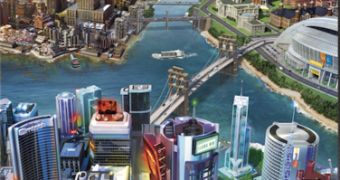The new SimCity, a reboot in more than name, is a revolution when it comes to city building, although the game might prove to be one of the most divisive in recent memory because of its use of always-on connections to drive a significant part of gameplay.
When it comes to the core city building segment, SimCity is impressive, allowing players to easily create the zones they are looking for and offering information about the situation of the city and its inhabitants both via the different layers gamers already know and more subtly with simple changes in the look of the city.
There’s much more specialization in SimCity than in previous games in the same series, with gamers able to choose what kind of experience they are focusing on for each of their cities.
The style of the game, based around tilt shift photography, is well suited to modern city buildings and never becomes an issue, even though some cartoon touches are a little thick.
Tourism and industrialization seem to be equally solid paths, but both have their advantages and disadvantages.
This is where other gamers come into play, as necessary entities that deliver extra-resources and create more jobs and markets for the gamer’s city.
Two or more players also need to work together in order to create a number of special Regional Works, which can benefit all those involved as long as the resources and the manpower can be brought together.
From what Maxis has shown in the E3 2012 demo, it seems that it will be pretty much impossible to play SimCity without accepting that other gamers are creating cities nearby and will be interacting with your own creation.
SimCity is currently slated to be launched on the PC during February of next year but, given the slate of big titles that are migrating in the same space, the game might get a delay.

 14 DAY TRIAL //
14 DAY TRIAL //